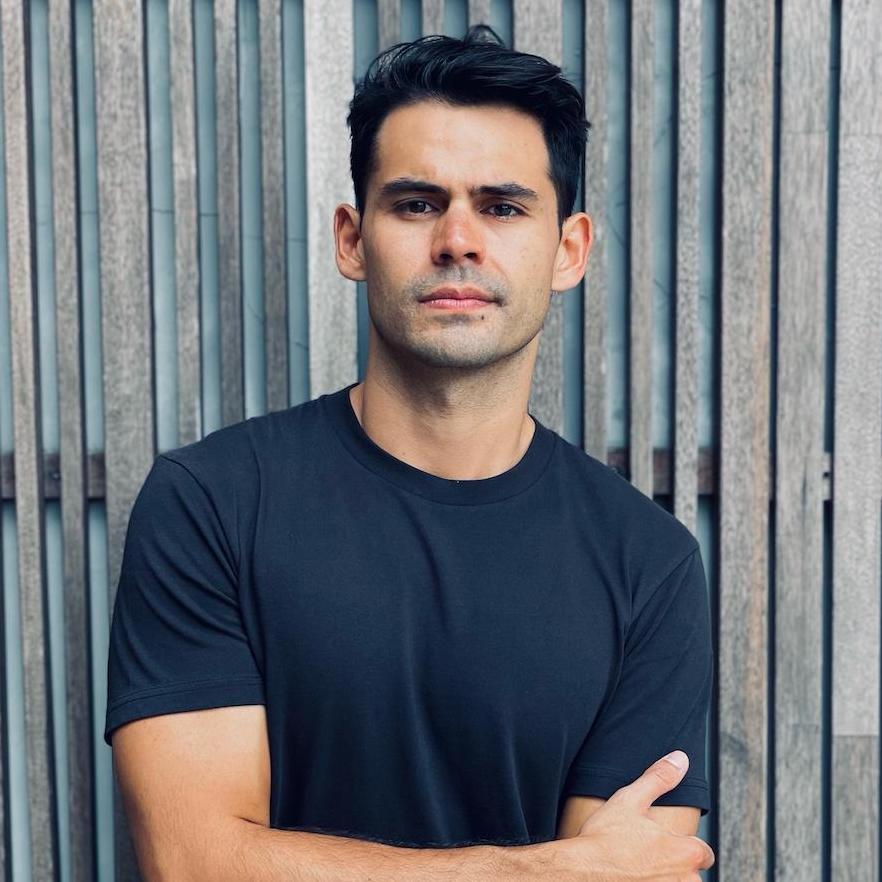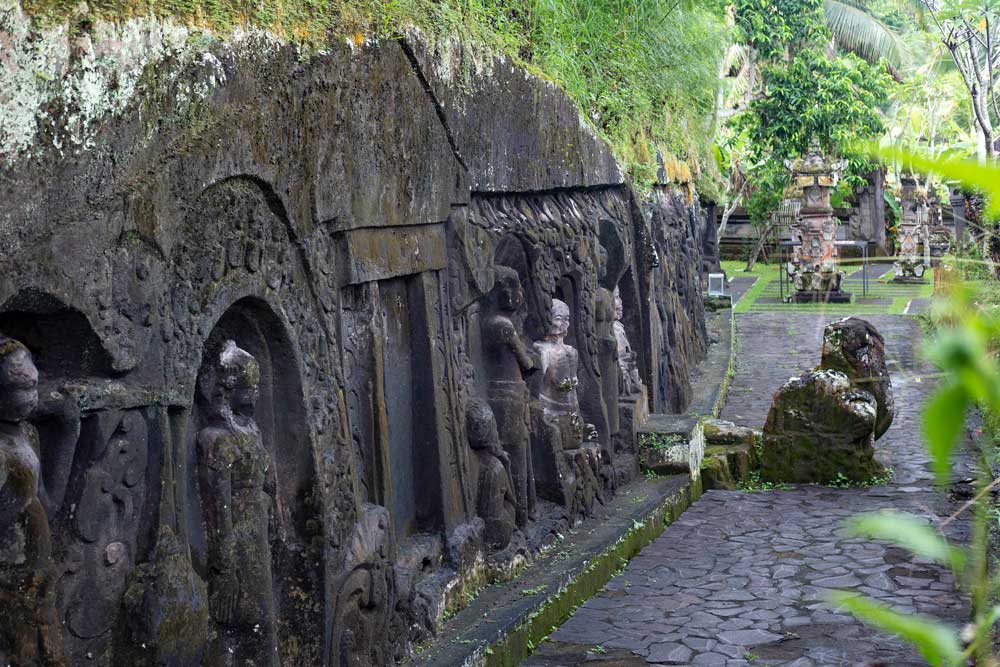
A centuries-old relief adorns Yeh Pulu, a humble but historically significant temple hidden in rural obscurity. Deep in an isolated ravine of Gianyar, these ancient stone-cut carvings give us a peek into Bali from centuries ago.
Just east of Ubud is the historically rich village of Bedulu, in Blahbatuh District of Gianyar. Best known for the famous archaeological site of Goa Gajah, it is also host to other historical points of interest, including one of Bali’s oldest temples, Pura Samuan Tiga; and the nearby archaeology museum known as Gedong Arca.
Relatively off the beaten track, Yeh Pulu is found in the valley sandwiched between the Petanu and Pakerisan rivers, deep in the rice fields and hidden under an embankment. Its concealed location explains why it was only rediscovered in 1925 by the punggawa of Ubud (district rulers who serve under a king), who then shared their news with the Dutch artist, W.O.J. Nieuwenkamp. Only much later, in 1929, when the area was properly excavated by the Dutch Colonial Archaeological Bureau, was the significance of Yeh Pulu revealed.
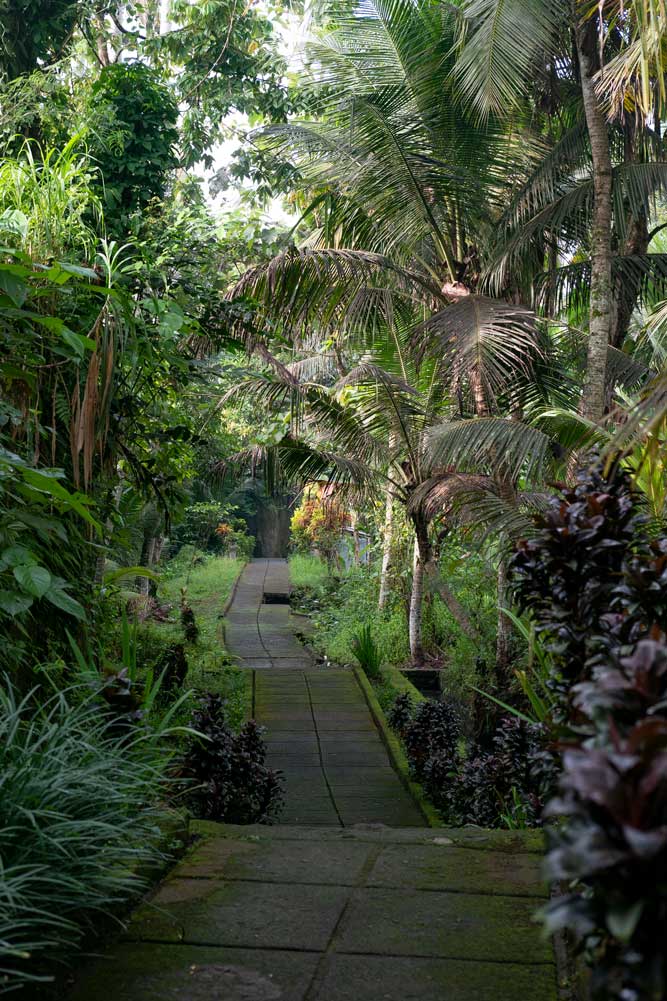
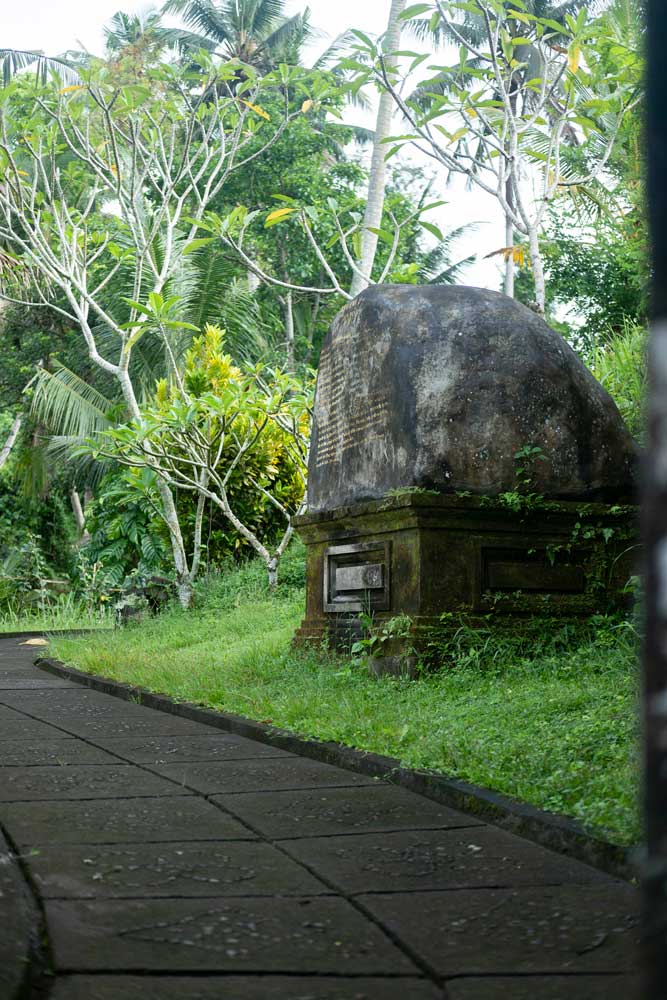
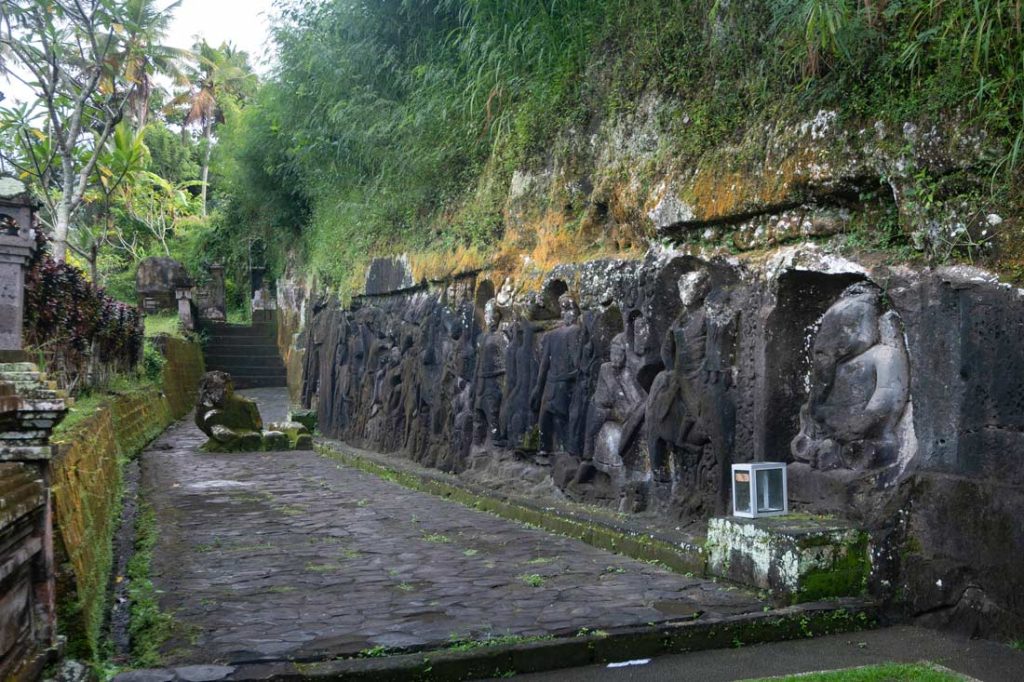
A 25-metre long and 2-metre high relief, carved deep into the riverbank walls, with clear depictions of human activity and everyday life. However, these carvings were unlike any style seen in Bali, and thus its origins and age became quite the mystery.
The images, running left to right (downstream), have a ‘wayang’ (shadow puppet) quality to them, as the figures look down the length (x-axis) of the relief. Yet, they are distinct: they are natural and lifelike, the faces and bodies rounded and in proportion. Regular wayang-style would have very flat and two-dimensional, their depictions ‘supernatural’. This caused much speculation on discovery — who carved this, and when?
There are nine scenes showing seemingly mundane everyday life activities: a boy saluting, two men carrying a hunted boar, whilst another being attacked by a boar, and another hunting on horseback; a woman kneeling, another man carrying ‘tuak’ (palm wine) in ceramic jars, another a garden hoe. The last carved figure is that of Ganesha, though only with two arms. Another theory posits that the relief tells the story of the Hindu Epic of Krishna.
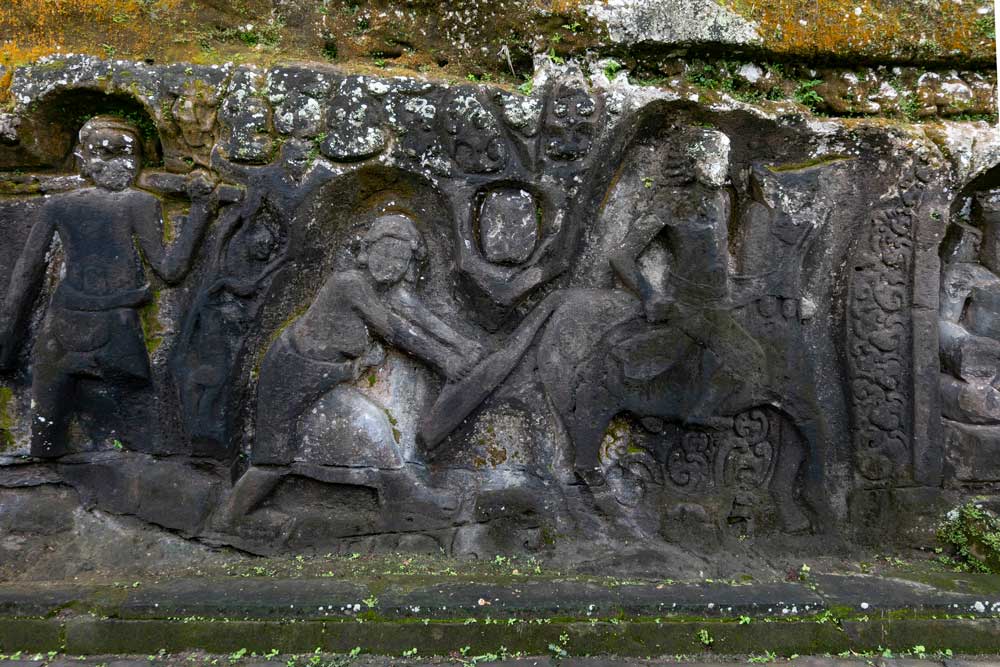
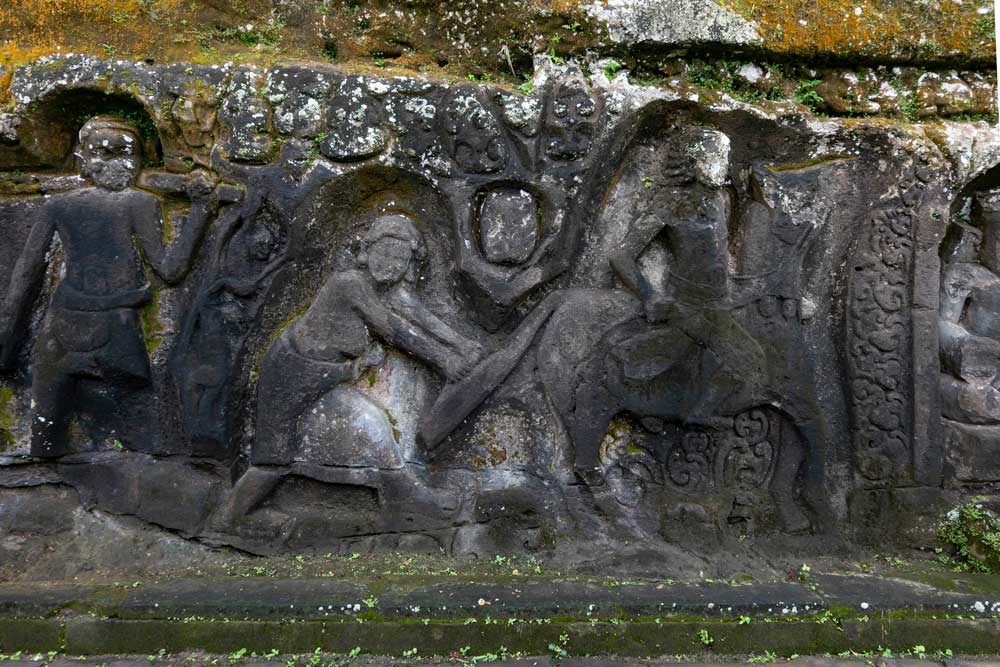
Decades later more studies were done, and the carvings were cross-referenced with temples in central and east Java (e.g. Candi Penataran, East Java), filtering it down to an ‘Ancient Javanese Period’, and finally, towards the end of the Majapahit Empire. This dates Yeh Pulu between the 14th and 15th centuries. But why such a distinct style? Research posits that the carvings were made by ‘non-palace’ carvers, explaining the sparseness and lifelikeness of the images; thus it is believed that it was ascetics and hermits themselves who carved this lonely rock face all those centuries ago.
This would certainly make sense, as at the far end of the carvings, the cliff has been caved out into a place of meditation, similar to those found in Gunung Kawi. This is a holy place, a holy spring temple, as explained through its name: Yeh Pulu meaning ‘water’ and ‘container/vessel’ respectively, and a holy spring pool is found near the three shrines placed at the end of the temple complex before it opens up to the riverbanks beyond.
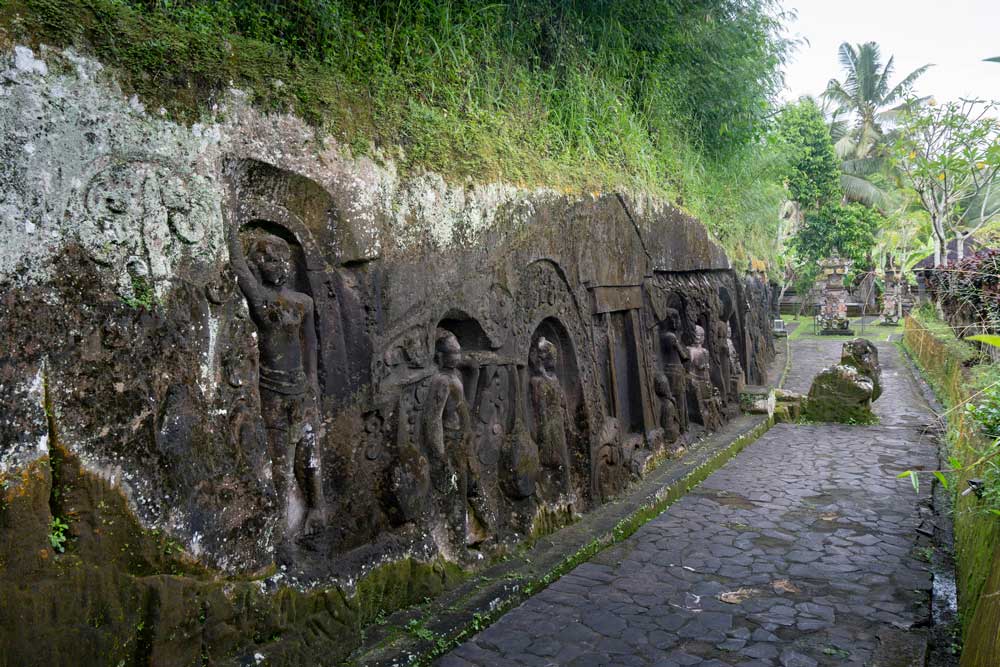
This is by no means a grand temple complex: a visit to Yeh Pulu grants you a mere 25-metre corridor of viewing. However to witness these lifelike carvings in person— especially in the serene, rural surroundings — ignites the imagination of what life might have been like here 600 years ago. A temple carer may be there when you visit, offering you a water blessing (for a donation), and inviting you to relive the lives of the ascetics and hermits who visited this ancient site.
The locally-owned ‘Yeh Pulu Cafe’ near the entrance is a good place for some refreshments whilst enjoying the surrounding rice field views. Because Yeh Pulu is likely to be a quick visit, it’s suggested that you also include other destinations nearby to make the journey here worth it. Entrance fees: IDR 30.000 for international tourists, IDR 20.000 for domestic tourists.

